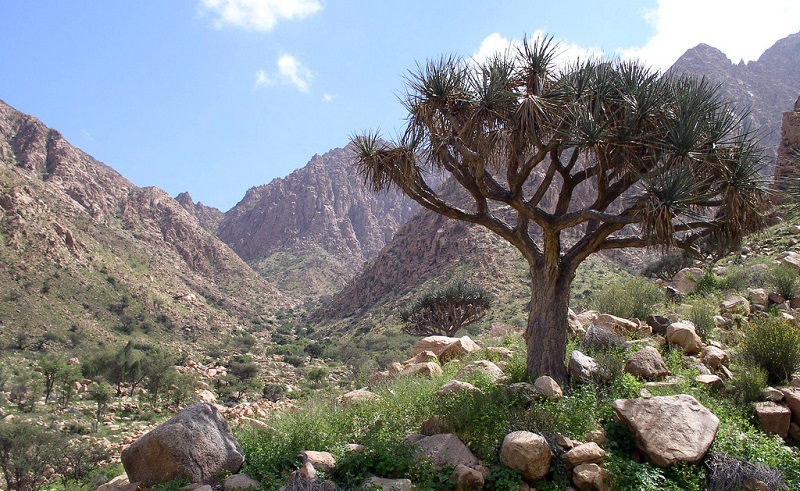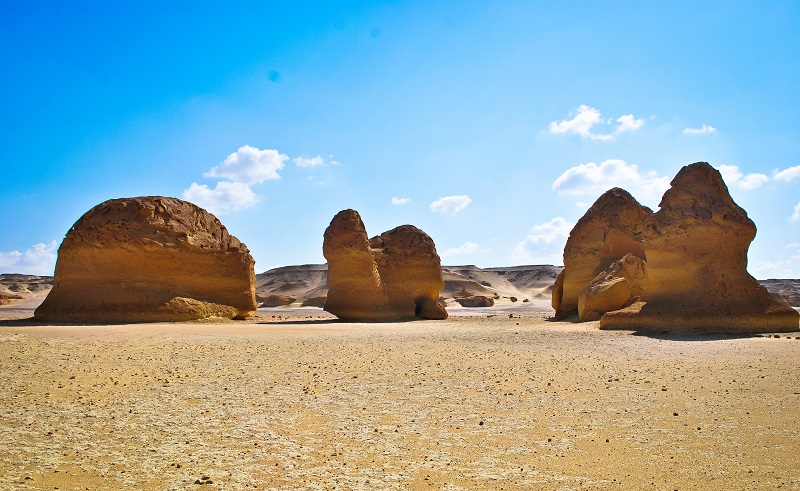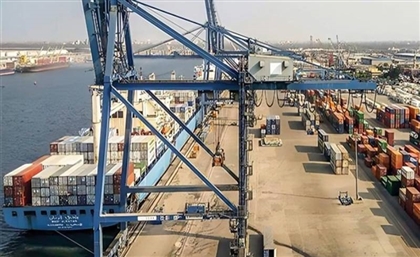9 of Egypt's Most Beautiful Nature Reserves
Discover Egypt's wild side (literally) in these nine dazzling national parks.

Living and working in the fishbowl that is Cairo all year round can understandably make us forget about what lies beyond our capital's borders. With all the congestion and artificiality, one may completely forget that there is more to our country than just rubbish-strewn streets. This is why it is important that we remind ourselves that Egypt, in fact, hosts some of the most incredible natural landscapes in the world. Many Egyptians lack environmental consciousness and are completely oblivious to climate change and what causes it, so you may be surprised to know that Egypt is home to around 30 nature reserves that cover 12% of the country. An astonishing fact considering the level of disregard we have for the environment. Luckily, enough people in positions high and low have in the past fought and are still fighting to preserve Egypt's biodiversity.
Recently, Egypt's Environment Minister Khaled Fahmy has emphasised how maintaining Egypt's national parks contributes a great deal to sustainable development and social justice, saying that an economic approach should be taken where the government could raise revenue and boost tourism through the preservation and expansion of protected lands. It's a decidedly refreshing perspective amidst the Egyptian economy's current orthodoxy of rampant development and construction projects taking place across the country, guzzling up virgin coastlines and untouched desert terrains.
Luxury resorts, 5-star hotels, glitzy shopping malls, plastic food courts, flashing lights, and bouncing night clubs can be enjoyable only for a while, but will never grant a truly memorable and timeless experience in the way these untamed frontiers will do.
In light of this, we've taken the time to show you nine of these unbelievably Heaven-like natural safe havens. The pictures we've found without question do justice to the old cliché less is more. We hope we inspire you to explore this relatively unknown side of Om El Donia.
Elba National Park
Also known as Gabal Elba, this national park was inaugurated in 1986 and covers over 3,500,000 hectares. Its geographic location and landscape make it the most unique region in Egypt, featuring plants, animals, and a climate not seen anywhere else. It lies in the south-eastern most corner of the country bordering Sudan. When you take your first strides in these lands, you may just collapse in awe at the scenery.
Wadi El Rayan Protected Area

Located in Fayoum, the preserve harbours Egypt's largest waterfalls, flowing in and out of each other through the Wadi El Rayan lakes region. Several hot springs and oases can be found there, and a very diverse range of animals live in the area, including reptiles, birds, and two endangered species of gazelle. Various types of flora and fauna thrive there in between the sand dunes that move across the landscape.
Lake Qarun Protected Area
Also in Fayoum lies the wetlands of Lake Qarun. Designated internationally as an "Important Bird Area", the protectorate is home to many different species of exotic birds, and is a highly important habitat for the flamingo. Being a major hub for thousands of bird species that migrate through the region, bird watching is a prominent activity there. Abundant numbers of fossils several millions of years old of primates and marshland mammals can also be found there, and have proven to be very crucial sources in the study of human evolution. Today, the lake is a flourishing ecosystem of amphibians, reptiles, and mammals.
Wadi El Gemal National Park
Covering nearly 7,500 square kilometres of land and sea, Wadi El Gemal National Park is one of Egypt's most biodiverse regions, with more than 450 species of coral reefs, 1200 species of fish, and several species of land mammals, including, of course, camels. Several prehistoric rock drawings and ancient ruins can also be found here. Situated close to Marsa Alam, the national park is home to some of Egypt's most gorgeous beaches, with turquoise waters and several native species of fish.
Wadi El Hitan National Park
Not too far from Cairo lies the 'Whale Valley' nature preserve, which has been dubbed so due to the prevalence of prehistoric fossils of whales. In fact, it has the world's highest concentrations of well preserved whale fossils from the beginning of the large mammals' evolution, majorly contributing to research in the area. As a result, the area was designated by the UN as a UNESCO World Heritage Site in 2005. This phenomenal region draws thousands of tourists and visitors annually, who also come to see its distinctive geography and landscape.
White Desert Protected Area
Lying completely within the Farafra depression in the Western Desert, the White Desert Protectorate is one of Egypt's most recently declared protected lands. With out-of-this-world rock formations and plains of chalk deposits, this surreal landscape is unlike any other in the world. It's one of the most visited regions in Egypt and provides mesmerising views throughout the day as the sun and the changing colours of the sky cast shadows over the sprouting rocks. Many choose to camp overnight to gaze at the Milky Way light up the sky with its billions of stars.
Ras Muhammed National Park
One of Egypt's oldest natural protectorates, South Sinai's Ras Muhammed was designated as such in 1983 shortly after the peninsula was returned to Egypt. Encompassing the southern-most tip of Sinai and the nearby islands of Tiran and Sanafir, and all the seawaters around them, the area has a flourishing population of fish and one of the world's most dazzling coral reefs. As a result, it attracts around 50,000 visitors a year and is one of the most popular diving destinations in the world. The land along the coast also harbours magnificent sand dunes and is a major stop for migratory birds.
Nabq Protected Area
Not too far north of Sharm El Sheikh is the Nabq Protected Area, established in 1992. It's the largest marine protectorate in the Gulf of Aqaba and is home to many species of coral reefs different from the ones found in Ras Muhammed. Heavy rains in the nearby mountains have spawned many varieties of plant life in the valleys, which seep into the coast providing a mix of fresh and salt water. This natural phenomenon has made for a unique ecosystem. Along the coast is a mangrove forest and the sand dunes of Wadi Kid, which are home to gazelles and ibexes. Off the coast, there's a shipwreck, which is a popular diving site where the area's coral reefs begin.
Abu Gallum Protected Area
A nature reserve since 1992, the Abu Galum Protectorate lies to the north of Nabq and covers an area of 400 square kilometres. High flying granite mountains cast their gaze over a narrow coastline that boasts coral reefs and a thriving marine ecosystem. It's one of the most isolated regions of Sinai and hosts few visitors, making it an especially relaxing and serene getaway. An extensive network of underwater caves are a popular yet dangerous diving spot. An endeavour only fit for the brave and the experienced.
























